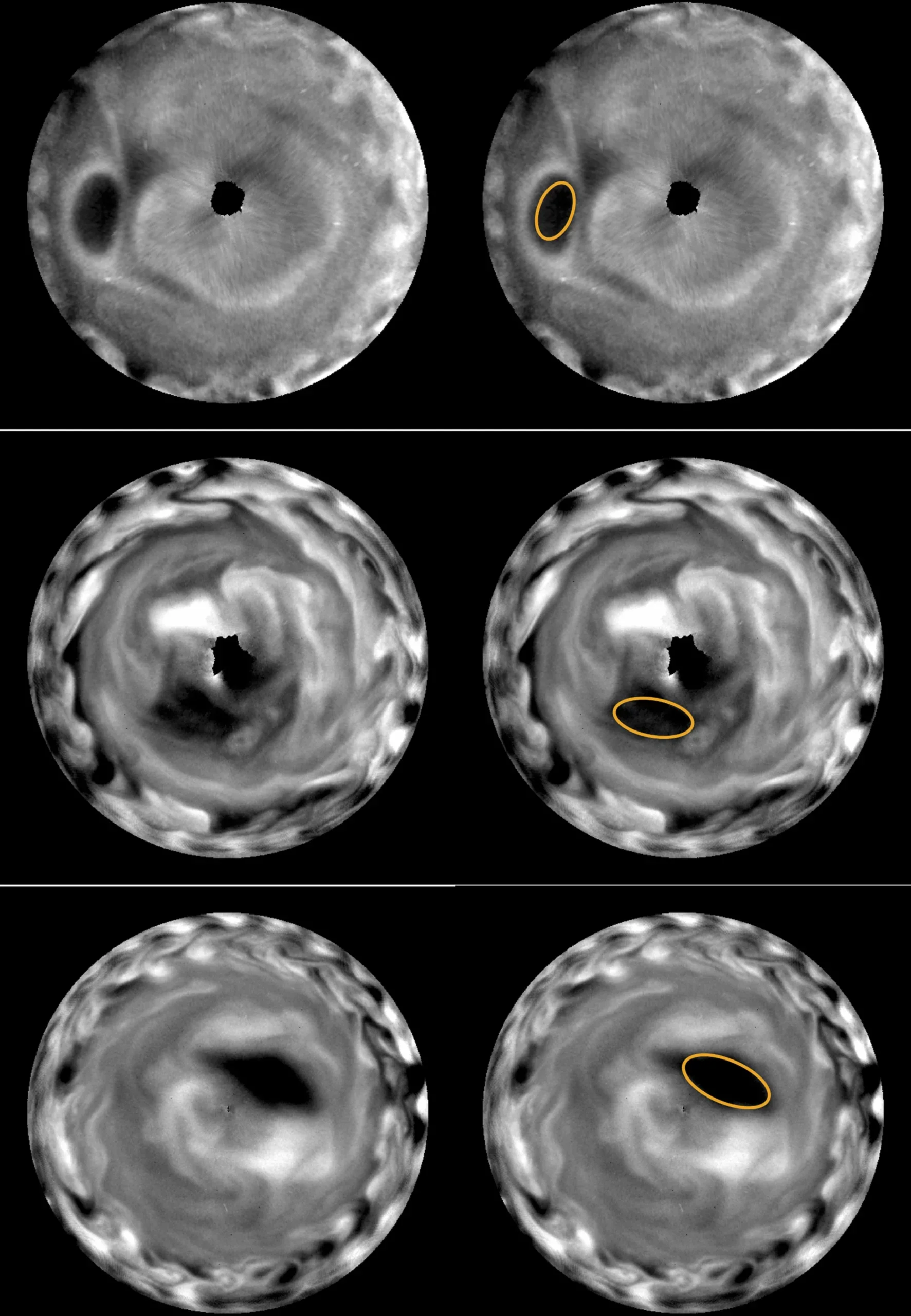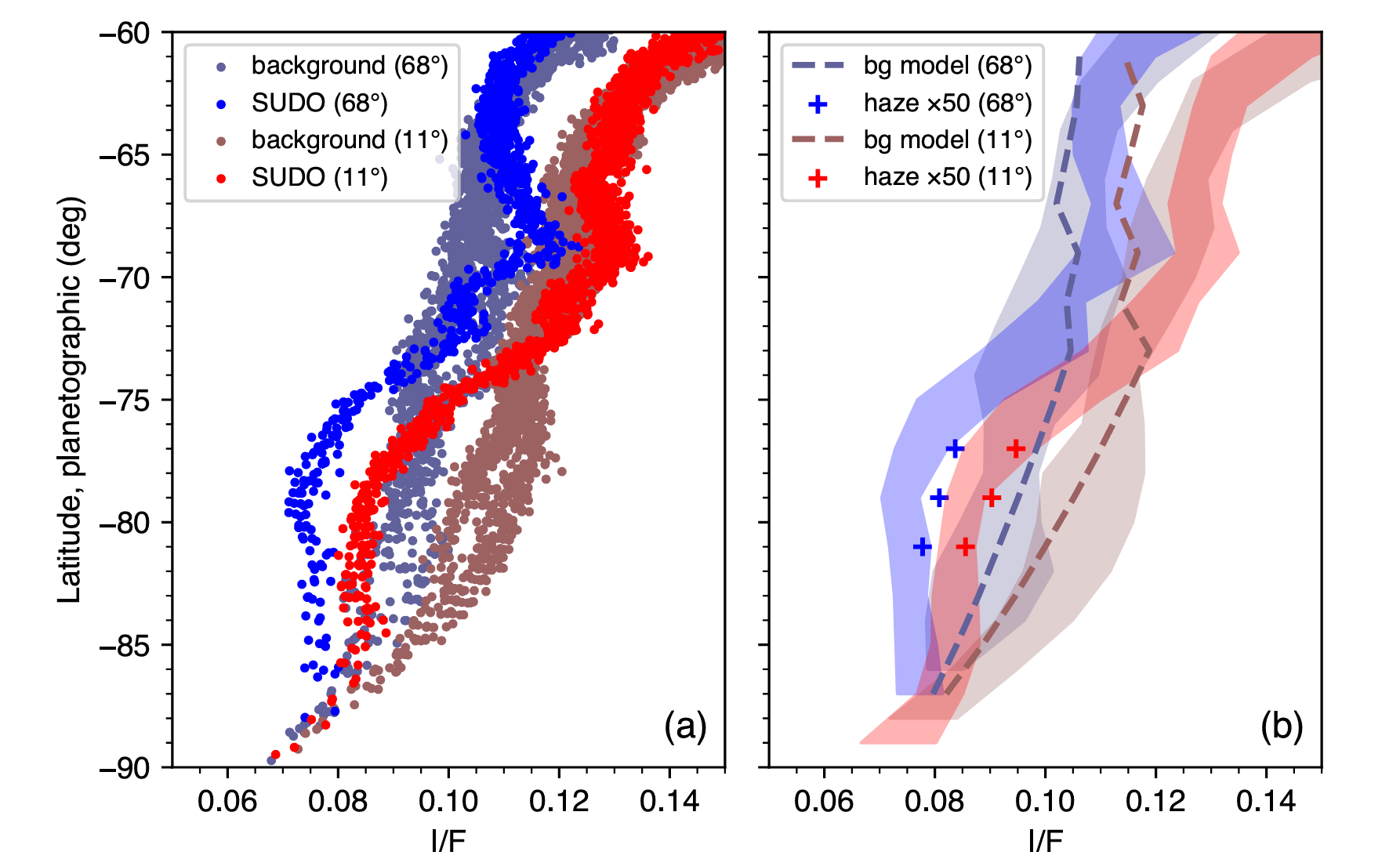Jupiter’s poles have long been a focus of intrigue for planetary scientists. Recent studies have uncovered massive dark ultraviolet (UV) ovals at the gas giant’s north and south poles. These phenomena, embedded in the stratospheric haze layers capping the planet’s poles, provide a window into complex atmospheric and magnetic processes.
Using data from the Hubble Space Telescope captured between 1994 and 2022, researchers examined 26 global maps of Jupiter to identify these transient UV-dark ovals. Observations revealed stark differences in the frequency and behavior of these features at the two poles.
Dark ovals at Jupiter’s south pole, termed southern UV-dark ovals (SUDOs), occur in nearly half of observations, making them four to six times more common than their northern counterparts, known as northern UV-dark ovals (NUDOs).
The southern ovals were found within the planet’s auroral ovals during much of their existence. These features are not mere surface anomalies but likely anticyclonic vortices that extend deep into the atmosphere. Their darkness in UV images points to an extraordinary thickening of haze—up to 50 times more than usual—or a significant upward shift in the haze distribution.

Such phenomena suggest a connection between Jupiter’s stratosphere and deeper atmospheric layers, driven by interactions between the planet’s intense magnetic field and atmospheric dynamics.
These findings emerged from an analysis led by researchers at the University of California, Berkeley, and collaborators. The results, published in Nature Astronomy, shed light on Jupiter’s atmospheric complexities and hint at processes far deeper than those responsible for Earth’s auroras.
The UV-dark ovals were first spotted in Hubble images from the late 1990s. The Cassini spacecraft also observed similar features during its flyby in 2000. Despite these early detections, the phenomena received little attention until UC Berkeley undergraduate Troy Tsubota conducted a systematic review of Hubble’s archival data.
Related Stories
Tsubota, alongside senior researcher Michael Wong, identified eight distinct SUDOs in nearly three decades of imagery. In contrast, only two NUDOs were detected during the same period.
Most of the images were part of the Outer Planet Atmospheres Legacy (OPAL) project, which annually captures data on Jupiter, Saturn, Uranus, and Neptune to monitor their atmospheric evolution.
Tsubota described the project’s data as a “gold mine” for studying long-term atmospheric changes. By building an analysis pipeline, he and his team uncovered valuable insights into Jupiter’s polar dynamics.
Understanding the mechanisms behind the ovals required collaboration with planetary atmosphere experts. Researchers proposed that the dark ovals are driven by vortex dynamics linked to Jupiter’s magnetic field.

Tom Stallard of Northumbria University hypothesized that these vortices originate in the ionosphere, where friction in magnetic field lines induces rotational motion. This energy propagates downward, weakening with depth but stirring the haze into concentrated, UV-absorbent regions.
Xi Zhang, from UC Santa Cruz, emphasized the role of these vortices in thickening the haze. “The haze in the dark ovals is 50 times thicker than the typical concentration,” Zhang explained, attributing this to vortex-driven dynamics rather than chemical processes triggered by high-energy particles. The ovals form within a month and dissipate in weeks, suggesting a relatively short atmospheric lifecycle.
The formation of UV-dark ovals highlights the intricate linkages between Jupiter’s atmospheric layers. Unlike the auroras, which are confined to upper layers, the ovals extend deep into the stratosphere.

“Studying connections between different atmospheric layers is very important for all planets,” Wong noted. “We see evidence for a process connecting everything in the entire Jupiter system, from the interior dynamo to the satellites and their plasma torii to the ionosphere to the stratospheric hazes.”
This interconnectedness underscores the importance of long-term planetary observation projects like OPAL. By tracking atmospheric changes over decades, scientists can better understand the dynamics of giant planets, exoplanets, and even Earth.
The study’s findings have broad implications for understanding atmospheric dynamics in the solar system. The connection between magnetic fields, vortices, and atmospheric haze highlights processes that may also occur on exoplanets with similar magnetic environments.
For Jupiter, the research raises new questions about the planet’s magnetic field interactions and the mechanisms driving its stratospheric haze. Future missions and observations could focus on capturing more frequent and detailed data to unravel the processes behind these elusive dark ovals.

By expanding knowledge of Jupiter’s poles, scientists gain a deeper appreciation for the planet’s complexity and its role as a natural laboratory for atmospheric science.
Note: Materials provided above by The Brighter Side of News. Content may be edited for style and length.
Like these kind of feel good stories? Get The Brighter Side of News’ newsletter.
The post Magnetic tornadoes are stirring up Earth-size clouds of haze on Jupiter appeared first on The Brighter Side of News.